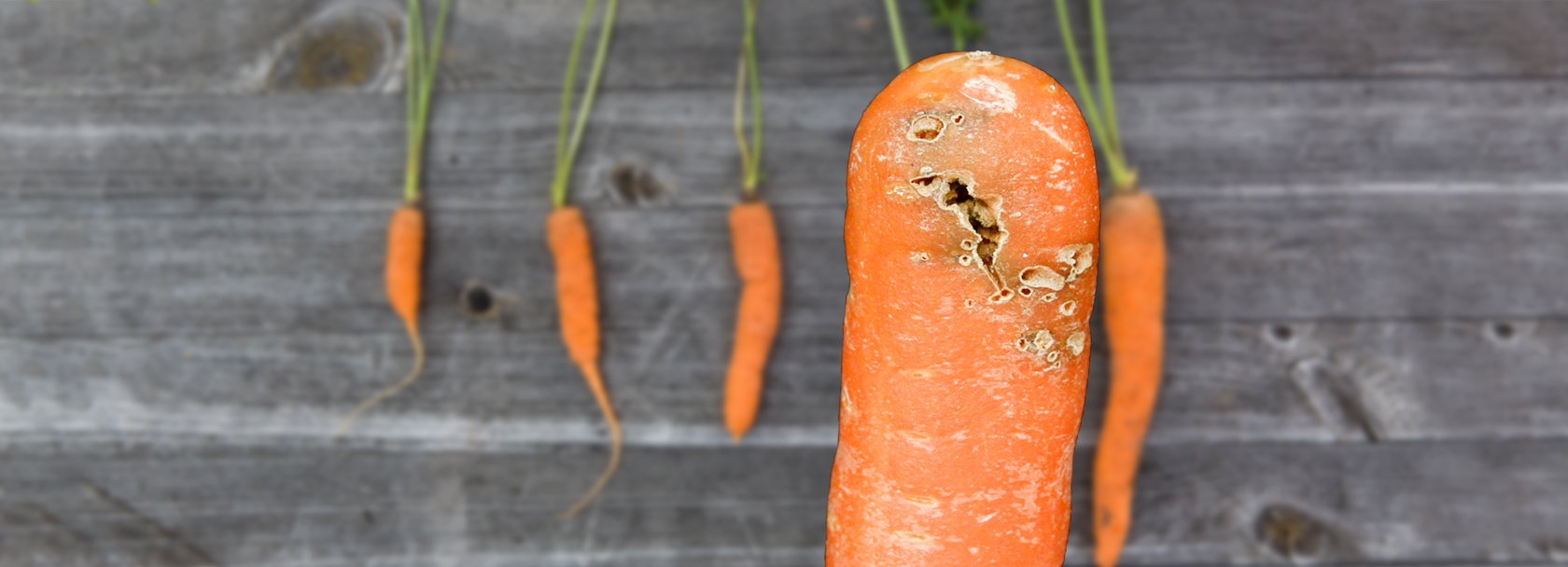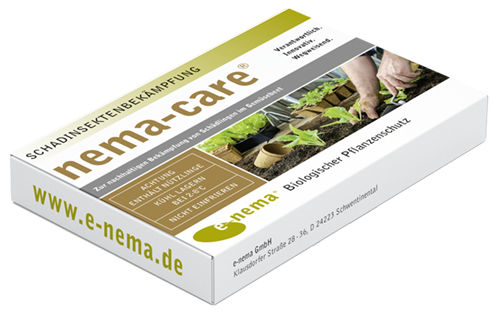Carrot
Control carrot flies biologically
Psila rosae
The carrot fly is a 4 - 5 mm large fly with a yellow head, red eyes and crystal clear wings. The breast and abdomen are black and its legs are yellow. It is a common, dreaded pest of carrot crops, active from May to September. Wind-protected, humid locations, preferably with relative humidity of 85 - 100% are preferred by the fly.
The larvae of the carrot fly are 6 - 8 mm long and milky white.
Life cycle of the carrot fly
The hibernation of the carrot fly occurs mainly as a pupa, sometimes also as a larva, in the soil at a depth of up to 30 cm. From mid-May, the first flies usually appear. They lay their eggs (about 0.5 mm in size) in soil crevices near the roots from the end of May until July. After a few days, the larvae hatch and cause feeding damage to the roots. 4 - 7 weeks later, from the second half of July, the larvae pupate in the soil to form a barrel pupa about 5 mm long. In late summer, around August, the second generation appears and the cycle begins again.
Damage caused by the carrot fly
The damage to plants is caused by the larvae of the carrot fly. After hatching, they crawl to the root tip and feed on the fine lateral roots. The larvae can travel distances of up to 60 cm. Later, they eat their way up through the roots from the bottom up, causing the typical rusty brown feeding tunnels in the root body. The feeding tunnels cause the carrots to rot quickly. In addition, the larvae deposit their feces in the ducts, causing the roots to turn brown.
The root body is streaked with rusty brown feeding tunnels, especially in the outer part, caused by heavy infestation with fly larvae. In case of heavy infestation in the juvenile stage, the carrot may die. Later infestation leads to quality losses. Infested celery remains retarded in growth. Just-forming tubers are brown-gray, petioles in the lower part often purple, roots rust-brown discolored.

On which plants are carrot flies found?
Affected plants include carrot, celery, parsley, parsnip, dill, tuberous fennel, caraway, chervil and other umbellifers. The adult carrot fly does not cause damage.
Control carrot flies with beneficial nematodes
Nematodes are tiny, filamentous soil organisms about 0.6 mm long. They are natural enemies of the carrot fly. Certain nematode species specialize on the carrot fly, among others, and can use its larvae for their own feeding and reproduction. The nematodes are supplied live in a powder. For application, they should be mixed with water exactly according to package directions and applied to the affected areas.
What stages of carrot fly can I control?
From May to September, the larvae of different generations present in the soil can be controlled with nematodes.
Product against carrot flies
Do you have questions?
Feel free to contact us personally.
